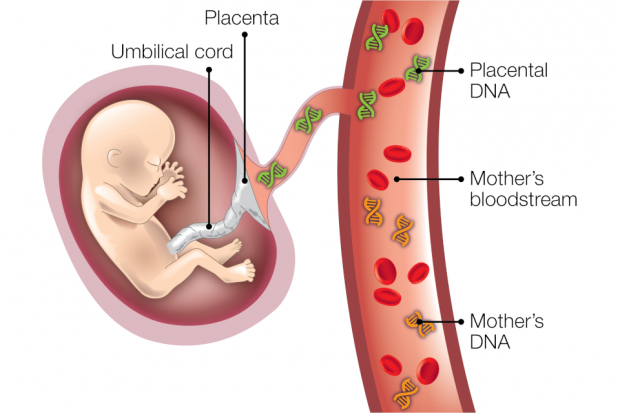
We always want to do the best job we possibly can when we create new screening resources for members of the public and NHS colleagues in local screening services. But this felt particularly pertinent when we started thinking about the introduction of non-invasive prenatal testing (NIPT) into the NHS screening pathway for Down’s syndrome, Edwards’ syndrome and Patau’s syndrome.
This is because Public Health England (PHE) is very aware that screening for these conditions needs to be an individual choice made by each pregnant woman. The language used when facilitating a personal informed choice needs to be sensitive, balanced, evidence-based and reflect the needs of the people offered or accepting screening.
So we set out to produce the best quality information we could for women, and education and training for health care professionals who offer screening for the 3 conditions. In particular, we wanted to:
- emphasise at every stage that screening is a choice
- improve our information about Down’s syndrome, Edwards’ syndrome and Patau’s syndrome so that women have access to accurate, up-to-date material developed with organisations representing people with the conditions
- collaborate with organisations that represent a range of experiences and perspectives to ensure we consider the information needs of all women
To meet these aims, PHE’s NIPT project board, which oversees all the preparations for introducing the new test, set up an information and education subgroup. We were so pleased to get fantastic representation on this group from clinicians, academics, colleagues across the 4 UK nations, and from the Down’s Syndrome Association (DSA), Down’s Syndrome Research Foundation (DSRF), SOFT-UK and Antenatal Results and Choices (ARC).
This group has met 14 times over the last few years to develop and fine tune a set of resources. Without their dedicated and incredibly constructive input we could not have produced information and education of such high quality.
Establishing the process
We wanted to follow a clear process in developing the new resources and to publish the process so that everyone could see how we arrived at the end products.
One of the first things the subgroup did was to create a standard process we could follow for this – and for other publications and leaflets more generally. This emphasises the collaborative, iterative nature of producing high quality publications and the importance of user research and evidence in the development process.
See the process for producing and reviewing PHE screening publications.
We also worked with the UK National Screening Committee, which was producing general guidance for the 4 UK nations about developing public information. This included an updated definition of ‘personal informed choice’. The inclusion of the word ‘personal’ is really helpful as it emphasises the fact that the decision needs to be right for each individual, fitting in with their values and circumstances.
Listening to users
After recognising the importance of user research, we spent lots of time listening to people’s views. We spoke to pregnant women, parents of children with Down’s syndrome, Edwards’ syndrome and Patau’s syndrome, women who made different choices after screening, and midwives who provide the information about screening and support families through the process. We did this through a series of focus groups and one-to-one interviews in 2018 (back when we could still meet up face to face!).
We learned a huge amount from these sessions, including:
- that women should be encouraged to say something if their choices aren't being listened to – this is why we added a line saying “You should speak up if you feel your choices are not being respected”
- the importance of a follow-up leaflet for women who get a higher-chance result from the initial screening test (we’ve now developed this)
- having different ways to explain the complicated screening pathway, which is why we added in a simple flowchart and text summary in the leaflet
- improvements to wording and making the descriptions of the conditions more balanced, with positive information as well as explanations of the potential challenges
People told us that by incorporating their feedback, which we hope we’ve done effectively, the resulting information would be much better than anything they received during previous pregnancies.
Explaining NIPT
NIPT itself is complicated and we had lots of discussions about how to describe it in a clear and straightforward way. As part of this we developed this illustration to help explain how NIPT involves measuring the DNA (genetic material) from the baby’s placenta in the mother’s blood.

End products
We have developed a range of resources to support the implementation of NIPT.
These include:
- a new online leaflet explaining a woman’s choices after a higher-chance screening result
- a printable version of the bloodstream illustration above
- training sessions in 2017 delivered with the help of parents of children with the conditions and additional workshops prior to implementation in 2021
- an e-learning module on the e-Learning for Health website
- a printed resource for community midwives containing headline NIPT information
We also updated our Screening tests for you and your baby leaflet to include information about NIPT. The new version will be going live on GOV.UK on 19 April 2021, as we explained in our recent blog.
Co-production
All the materials were co-produced with the NIPT information and education subgroup, with members feeding into multiple versions until the final one was agreed. This partnership approach between subject matter leads and content designers made for some pretty interesting and intense discussions, but we hope we got there in the end!
We’re very proud of the new resources, but as we wrote in our publication development guidance, nothing stays the same for long and we will regularly review and further improve them. This fits with the whole ‘evaluative rollout’ ethos of NIPT implementation, which is all about learning about the impact of the new test as we go, and adjusting the plans where necessary.
Talking about the process for developing the resources, Julian Hallett from the DSA said:
Listening to the lived experience of parents of children who have Down’s syndrome is crucial. We must ensure that pregnant women are given up to date and accurate information about Down’s syndrome, if we are to be confident that women are supported to make personal informed choices about what, if any, antenatal screening tests they wish to have.
Jan Fowler from SOFT added:
SOFT UK is pleased to have been able to collaborate with PHE, ensuring that the lived experience of families has shaped the development of these resources. Actively listening to families with experience of rare and complex conditions, such as Edwards’ and Patau’s syndrome, has encouraged them to feel that both future parents and healthcare professionals will benefit positively from that experience.
Liz Corcoran from the DSRF explained:
We’re delighted that PHE has followed recommendations to include external stakeholders in resource production for NIPT, leading to a new booklet for women and a new staff training resource. We look forward to further involvement with the screening programme in the future, as well as helping to understand the impact of NIPT.
And Jane Fisher from ARC told us that:
It was really gratifying to be part of the collaborative effort that went into producing these resources. We hope what we have achieved together means expectant parents have both high quality information and a well-equipped heath care team so that they can make the choices through antenatal screening that are individually right for them.
Wider benefits
One of the great things about working on this project has been its wider positive impact on the NHS screening programme for Down’s syndrome, Edwards’ syndrome and Patau’s syndrome (and across screening more generally).
As well as the process for producing screening information and publications, we’ve developed our skills and processes for carrying out user research and involving stakeholders and members of the public. We’ve also done a lot of work around appropriate language – this is included in the training resources and we also had a great guest blog on the issue. You may also have seen our recent blog about our updated letter templates for antenatal screening labs to use when providing lower chance results to women following a combined or quadruple screening test.
As we’re in the midst of the work to make much greater use of digital information about screening, we’ve also been able to make use of these approaches to produce more accessible and engaging content for the vast majority of women who expect to use their phones to access NHS information.
This really has felt like an important project to be part of and one that’s re-emphasised the role of effective population screening in the NHS – that is, to offer people the best possible screening tests with the best possible information, so that they can make the choices which are right for them.
PHE Screening blog
The PHE Screening blog provides up to date news from all NHS screening programmes. You can register to receive updates direct to your inbox, so there’s no need to keep checking for new blogs. If you have any questions about this blog article, or about population screening in England, please contact the PHE screening helpdesk.